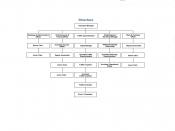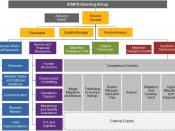This paper explains the relationships of organizational design, structure, culture and change. Organisational theory seeks to understand the principle that govern how organizations operate, evolve, and change their structures and cultures and the factors that affect the way organizations operate, evolve, change. Its focus is on the organization as a whole. An organisations behavior is the result of its design and the principles behind its operations.
1) ORGANISATIONAL THEORY
Organisational theory is designed to understand the nature of the organisations. By which organizations can evaluate its overall business by putting the right structure and operate in different ways. Organisational theory also helps us understand how processes such as change and decision making can be managed. It deals with different structures and cultures such as large organizations have different structures and cultures than small ones, and the manufacturing organisations operate in a different way than those in the service sector.
(Burton & Obel, pp.
11 to 12)
2) ORGANISATIONAL DESIGN
Organization Design is a formal, guided process for integrating the people, information and technology of an organisation. It is used to match the form of the organisation as closely as possible to the purpose the organization seeks to achieve. Through the design process, organizations act to improve the probability that the collective efforts of members will be successful.
(Burton & Obel, p. 13)
3) ORGANISATIONAL STRUCTURE
Organisational structure has long been described as a mechanism through which effort is integrated through the coordination and control of activities There are many different types of structures and for years researchers and practitioners attempted to determine what type of structure was in fact the most effective. This line of inquiry has led ultimately to a contingency view of structure, that is, the most appropriate structure for a given organisation is a function of the...


